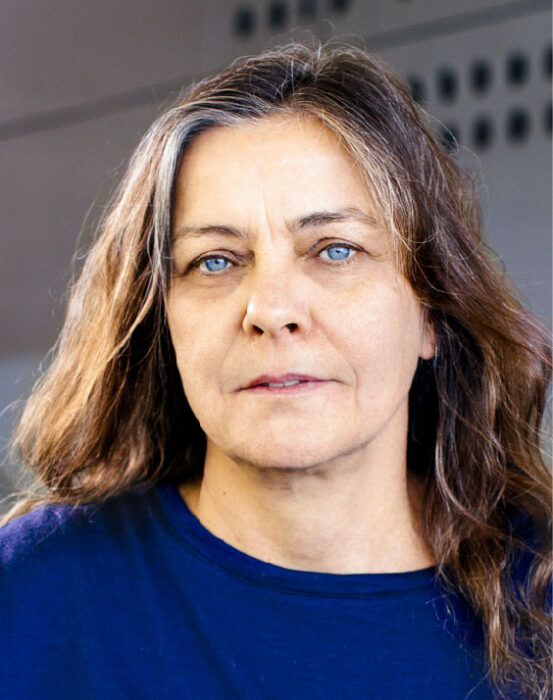
On Monday 27th November at 11AM (GMT) Jill Banfield will deliver the 2023 Crick Lecture, ‘Innovating metagenomics to explore the strange world of archaeal extrachromosomal elements.’ Jill’s lecture will be delivered in the LMB Max Perutz Lecture Theatre and will also be streamed over Zoom where anyone who is interested is welcome to join.
Jill Banfield is a Professor in the Departments of Earth and Planetary Science and Environmental Science, Policy, and Management at the University of California, Berkeley. Jill spent her early life in New South Wales, Australia. She later obtained her undergraduate and master’s degrees from the Australian National University and then her Ph.D. in Earth and Planetary Science at John Hopkins University in Baltimore 1990.
Jill’s main area of research is in Geomicrobiology and Environmental microbiology. She is interested in the relationship between microorganisms and their natural environments.
Her group studies microbial communities primarily using cultivation-independent approaches such as geonomics and proteomics. Her group works on microbial dissolution and precipitation of minerals, the structure and its properties, and reactivity of nanoparticles, microbial ecology, and evolution. Her projects have taken her to some interesting field locations such as the Iron Mountain in California, the Angelo reserve in Northern California and Rivers sites in Colorado, Utah.
Jill has recently been awarded the 2023 van Leeuwenhoek Medal for contribution to the understanding of microbial communities and interactions between microbes and the environment. She was the first woman to win this award in its 125-year history. She was elected a Fellow of the Royal Society in 2018, elected to the Australian Academy of Sciences in 2015 and to the National Academy of Sciences in 2006.
Lecture Abstract
Metagenomic methods have brought to light huge, diverse, linear extrachromosomal elements of Archaea that are referred to as Borgs, given their propensity to assimilate DNA from diverse organisms. Borgs clearly replicate in anaerobic methane-oxidizing archaea yet cannot easily be classified as either viruses or plasmids. We are applying new short read genome curation methods, long-read sequencing information and in silico structural biology tools to comprehensively define their genomes and uncover functions in their enigmatic proteomes. The findings indicate unexpected, highly replicated capacities that that alter our perception of these strange, and likely biogeochemically important, entities.
Background information
The Francis Crick lecture is given in honour of LMB alumnus and Nobel Laureate Francis Crick. It is one of a series of named lectures organised by the LMB and given by eminent scientists from around the world. These talks are supported financially by AstraZeneca and the Max Perutz Fund.
Francis was born in 1916 in Northampton. He received a B.Sc. in physics from University College London in 1937. His subsequent Ph.D. was interrupted by World War II, during which he worked on the design of acoustic and magnetic mines for the British Admiralty. In 1948 he joined Max Perutz’s MRC Unit for Research on the Molecular Structure of Biological Systems (now the MRC Laboratory of Molecular Biology). It was here that he helped solve the structure of DNA and initiated work on the genetic code. In 1976 he moved to the Salk Institute in California where he immersed himself in trying to define how we are aware of things, looking to find a neuronal correlate of consciousness. He continued with this until he died in San Diego on 28 July 2004.
Further references
Jill Banfield’s web page
Zoom link for the 2023 Crick Lecture
Francis Crick Biography
LMB Named Lectures
Poster for the Lecture